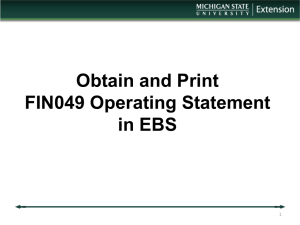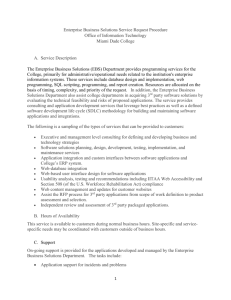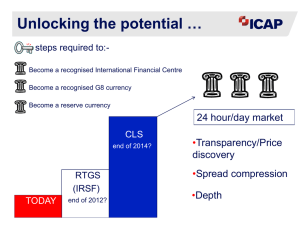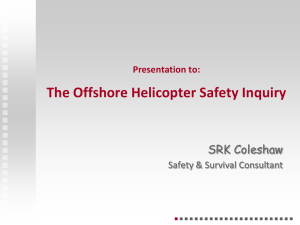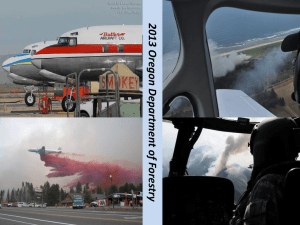Question set - Step Change in Safety
advertisement
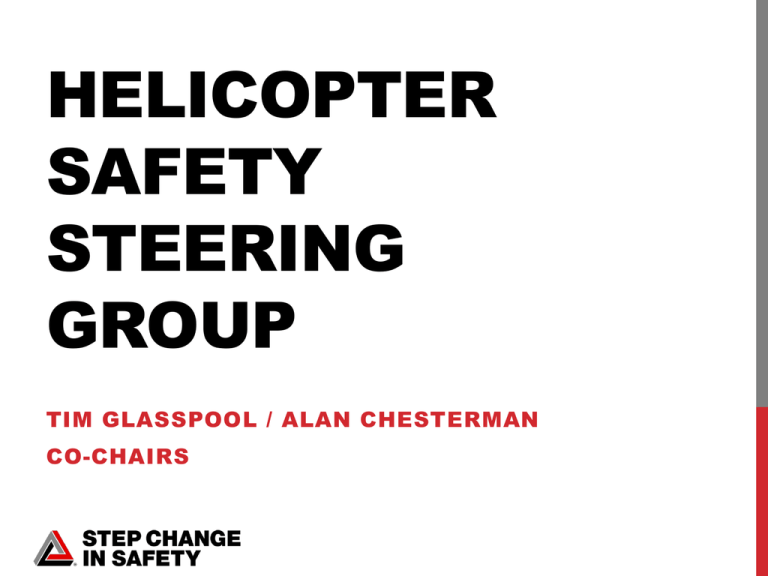
HELICOPTER SAFETY STEERING GROUP TIM GLASSPOOL / ALAN CHESTERMAN CO-CHAIRS WHAT HSSG HAS ACHIEVED A trusted communications link to the Offshore workforce • Working hard to increase workforce confidence in Helicopters. Production of Newsletters to educate and inform • How Commercial Air Transport Regulation Works • The facts behind RTB’s • The outcomes of the various investigations and inquiries as they are published Facilitated the re-introduction of the EC225 with additional safety measures • Workforce engagement presentations • Factory visits • Appointment of third-party experts Has provided the means to keep the industry aligned and flying after each accident THE FUTURE OF HSSG Even before CAP 1145 the HSSG was changing. More focused • Smaller group of business leaders • Prioritised tasks – ranked on safety improvement Increased ownership of the issues • Fewer tasks, faster implementation Accountable to achieve targets • Individuals accountable to the Group for achieving defined targets. With the results a matter of public record. • First meeting 23rd Jan, attended and fully supported by Bristow, Bond and CHC MDs. • Helicopter manufacturers represented. • By invitation only from next meeting 20th March. • Prioritisation of key activities underway. 4 HSSG STRATEGY WORK PLAN – CONSOLIDATE AND PRIORITISE BY 1Q Project Actvities Who 2014 4Q 1Q 2Q 3Q 4Q HSSG meetings G-WNSB investigation AAIB Monitor lessons from incidents HSSG Recommendations and actions CAA Lessons from Incidents CAA operations and safety review Initial & recommendations & actions Heli-Operators Joint Safety Review 22/5 20/3 Other meetings & key events Ongoing Operators Follow-up activities Draft strategy and activities HSSG Strategy and work plan 13/3 New HSSG constituents Review & revise HSSG / ASTG activity plans Regular E-updates Workforce Communication Lessons learned findings / actions Comms Group Potential New Key Projects Operating procedures and training Projects from CAA & Operators reviews Heli-contracts Standard dontract technical requirements TBC Helicopter escape and survival Escape and Survival study TBC Current Projects HUMS AAD Develop recommendations ASTG Encourage implementation HSSG Improved helideck lighting Communicate production version to industry Implementation by industry (summer activity) Weather Station Network Follow-up review & improve OGUK Industry Industry/HSSG Ongoing 24/7 25/9 27/11 CAP 1145 Produced internally by the CAA in response to the Transport Select Committee Inquiry into helicopter safety An 18-month report produced in 4 months. The CAA have been under fire from various quarters regarding tougher regulation and oversight – this is the response. The timelines are deliberately aggressive to force a response from the industry. SOME IMPLICATIONS OF CAP 1145 Availability of Cat A EBS • Helicopter seating restrictions Helicopter Operations at high Sea States • No real change from the current situation • Side floating helicopters are several years away Emergency exit size limitations • Methodology and impact still to be determined Each requirement will become legally enforceable through the publication of CAA Operational Directives. • These will apply to all UK registered aircraft around the world, and to all aircraft operating in the UKCS, regardless of their State of Registration THE ROLE OF HSSG A new helicopter offshore safety forum has been established to drive forward the actions and recommendations from CAP 1145 The role of HSSG will be to communicate and facilitate these issues, and those of the Joint Operators Review (JOR) For example; • Passenger sizing relative to emergency exits. How will this be achieved? It cannot be decided at the check-in desk. • Allocation of Cat A EBS. This needs to be managed across the UKCS, not just on a company-by-company basis HSSG will work with OGUK, the helicopter operators and the CAA to determine how best to proceed. CAP 1145 RESPONSE – EBS WORKGROUP 19 MARCH 2014 CAA ACTION 8 A8. With effect from 01 June 2014, the CAA will prohibit the occupation of passenger seats not adjacent to pushout window emergency exits during offshore helicopter operations, except in response to an offshore emergency, unless the consequences of capsize are mitigated by at least one of the following: All passengers on offshore flights wearing Emergency Breathing Systems that meet Category ‘A’ of the specification detailed in CAP 1034 in order to increase underwater survival time; Fitment of the side-floating helicopter scheme in order to remove the time pressure to escape. SCiS Terms of Reference To introduce a fit-for purpose Category A Emergency Breathing System (EBS) for passenger use in helicopters servicing the UK offshore oil and gas Industry. The EBS must be integrated with the other survival systems in passenger use, easy and comfortable to use, with a minimal training requirement. CAP 1034 - CAT A EBS KEY REQUIREMENTS • Have the capability to be deployed both in air and underwater. • The EBS shall be simple to deploy and capable of being operated with either hand. • No more than one action should be required to activate the system on submersion. • Subjects should be provided with a means to prevent water from entering the nose. • It shall be fully possible to deploy category A EBS in less than 12 seconds with one hand. • It shall be demonstrated that the mouthpiece can be deployed within 10 seconds. • Cold water performance; EBS systems used in testing to define the standard provided sufficient breathing air for a duration >60 seconds in cold (12oC) water.* * Depends on actual water temperature, deployment depth, individual fitness level and breathing rate. EMERGENCY BREATHING SYSTEMS Three types of EBS are currently available to provide short term air supply for emergency escape. • Re-breather (Category B) EBS uses a bag acting as an artificial lung – the user takes a breath before immersion, breathes into the bag and rebreathes air from the bag. • Compressed Air (Category A) EBS is a small aqualung; air stored in a small cylinder at high pressure is released by a regulator for breathing. Canada currently uses this type of EBS. • Hybrid (Category B unless modified) EBS is a re-breather with a small CA cylinder that releases air into the bag on immersion. The user rebreathes air from the bag in the same way as a non-hybrid re-breather but need not take a breath before submersion. UK currently uses this type of EBS. PROJECT TEAM Name Organisation Colin Griffiths TSEUK Dr. Sue Coleshaw EXTERNAL CONTACTS Representation Name Organisation Representation Chair David Doig OPITO Group Chief Executive SRK Coleshaw EBS SME* Mark Neilson OPITO Technical Director Greg Allanach Survivtec Safety Equipment Provider* Chester Armstrong CAA Davie Hunter Shell O&G Duty Holder Aviation SME Drew Wilson Lloyds SI971 Rep Jon Hopkinson CHC Helicopter Service Provider Emily Taylor Step Change Secretariat/Senior Business Analyst Dave Howson CAA Dominic Cortizo CAA Chris Sherman HSE Robert Paterson OGUK Les Linklater SCiS Flight Operations Manager (Helicopters) Research Project Manager Specialist Chief Inspector of Diving Health, Safety & Employment Issues Director Team Leader
